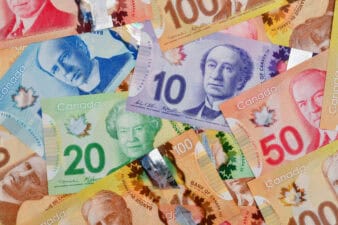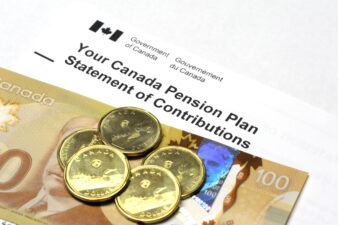We’d all like a passive source of income that pays each month, come rain, sickness, or any other mishap you can think of.
Real estate has been a popular choice for income-seeking investors for years. There will always be demand for real estate, it’s relatively simple for someone to acquire and operate, and it’s easy to aggressively borrow to really juice the yield on the original investment.
Other investors have noticed this and have bid up the price on Canadian real estate. Other things that have made real estate a more popular investment than stocks is a more stable price, better recent performance, and countless real estate programs on television showing the easy profits investors can get from the asset class. Many are arguing that these easy profits have made the sector risky for individual landlords.
There’s a better way. REITs offer investors higher yields than physical real estate, all without having to take the risk of borrowing large amounts of money. REITs also offer economies of scale, professional management at a very reasonable cost, and there are dozens of analysts, pundits, and other knowledgeable investors covering the sector.
One of my favourite REITs is H&R Real Estate Investment Trust (TSX:HR.UN). Here’s how you can turn it into a major passive income machine.
A steady performer
H&R has experienced some issues over the years, particularly during the 2008-09 financial crisis. The company took on a major expansion project at precisely the wrong time, which lead to an eventual dividend cut and bailout from Fairfax Financial.
Seven years later, things are much different. H&R has grown into a colossal real estate powerhouse, becoming the second-largest REIT in the country after it acquired Primaris in 2013. It also got its debt under control, shrinking its debt-to-assets ratio down from 50.8% at the end of 2012 to 45.8% today.
In total, H&R owns some 46 million square feet split between office, retail, industrial, and most recently, residential assets. Approximately three million square feet are owned in the United States via the company’s 33.6% interest in Echo, an investment that has done well lately as the Canadian dollar weakened against the greenback.
One thing that has hurt H&R recently is its exposure to Alberta. Approximately 30% of its portfolio is located in the oil-rich province, with 28% of its net operating income coming from the area. Some 72% of its income from the province comes from The Bow, Calgary’s largest office tower. Encana is the major tenant in that location. In total, approximately 12.5% of the REIT’s operating income comes from that company.
When oil was below $30 per barrel, it’s easy to see why investors were nervous about having so much exposure to one struggling energy producer. Now that the price of crude is closer to $40, investors are less concerned with Encana’s solvency.
Even during this downturn in Alberta, earnings haven’t taken a hit. In 2015 the company reported funds from operations of $1.95 per share, an increase of 3.7% compared with 2014. This gives the company a payout ratio of 69.2%, one of the lowest in the whole REIT sector.
Collect four figures monthly from H&R
These days, H&R pays investors a dividend of $0.1125 per share each month, which works out to a 6.6% yield. While that’s not the highest yield in the REIT sector, H&R’s dividend is attractive because of the stability and the low payout ratio.
The yield is still high enough that investors can build a serious income stream without putting an onerous amount of capital to work. It would take approximately 8,900 H&R shares to generate an income stream of $1,000 per month, for a total investment of $182,450, ignoring any trading commissions.
In downtown Toronto or Vancouver, residential property trades hands at approximately 22.5 times its annual rent, which works out to a return on investment of 4%. And that doesn’t even include operating expenses. It would take at least $300,000 to generate an equivalent income stream in two of Canada’s largest markets.
I believe every investor should be striving for a dependable passive income source. H&R REIT is a pretty good investment to start that journey. Even if you don’t have the capital to generate $1,000 per month, you should still start collecting those sweet dividends today.







